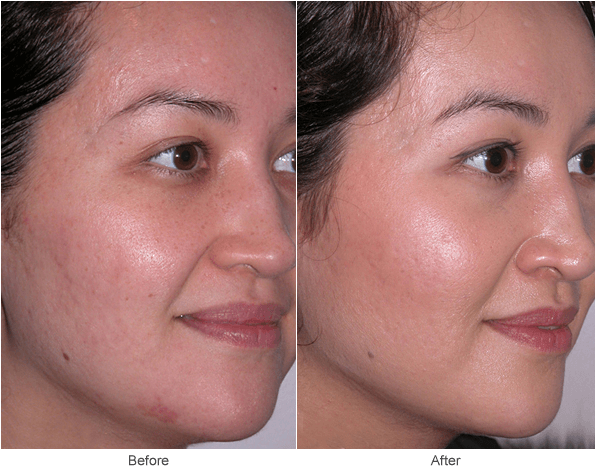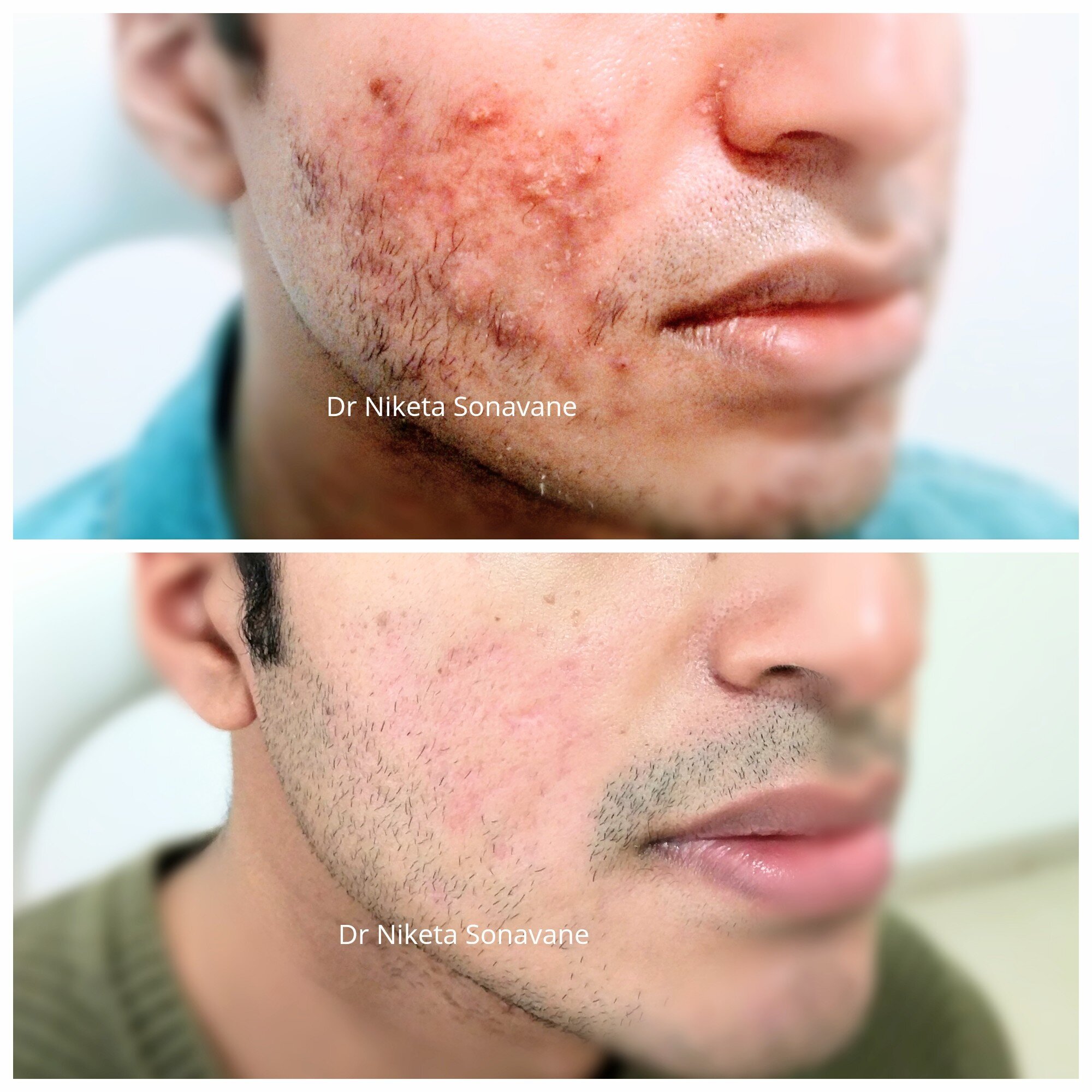Understanding the Numerous Skin Problem and Effective Treatment Options for Acne Marks
Acne scars stand for a complex interaction of skin problems that dramatically impact individuals' self-esteem and general skin wellness. Understanding the unique sorts of acne marks-- atrophic and hypertrophic-- alongside their underlying causes, is essential for figuring out efficient treatment methods. Numerous therapeutic alternatives exist, ranging from advanced skin-related procedures to all-natural treatments. The efficacy of these therapies frequently hinges on individualized assessments by qualified professionals. As we check out the landscape of acne scar management, it ends up being noticeable that the journey towards more clear skin might entail even more than simply topical remedies.
Sorts Of Acne Scars

On the other hand, hypertrophic marks arise from an overflow of collagen during the healing procedure, resulting in raised areas on the skin. These marks are typically strong and can vary in color, occasionally appearing red or darker than the bordering skin.
Recognizing these sorts of acne marks is crucial for establishing a reliable treatment strategy - skin rejuvenation treatments. Options might include chemical peels, laser treatment, microneedling, or dermal fillers, tailored to the particular scar kind. An extensive consultation with a skin doctor can assist identify the most appropriate treatment, considering the individual's skin type, mark seriousness, and overall skin health and wellness
Sources Of Acne Scarring
Scarring takes place as an outcome of the body's natural recovery response to inflammation and injury triggered by acne lesions. When acne kinds, it activates an inflammatory action, bring about the release of various cytokines and growth aspects that advertise healing. This process can in some cases lead to excessive tissue formation or poor fixing, resulting in marks.
The key root causes of acne scarring consist of the extent of the acne itself, period of the sores, and private skin types. Serious inflammatory acne, such as nodules and cysts, is most likely to cause scarring due to deeper cells damage. Additionally, incorrect handling of acne lesions, such as pressing or selecting, can aggravate tissue injury and inflammation, increasing the likelihood of scarring.
Hereditary proneness likewise plays a considerable role; people with a household history of scarring go to a higher threat. In addition, skin type and color can affect scar development, as darker skin tones might experience post-inflammatory hyperpigmentation, while lighter skin might develop atrophic marks.
Inevitably, comprehending these causes is essential in handling acne and minimizing the capacity for scarring.

Therapy Options for Scarring
Reliable treatment options for acne scarring differ depending upon the type and extent of the marks. Typically categorized into atrophic, hypertrophic, and keloid marks, these conditions require customized methods for optimum outcomes.
For atrophic scars, which are characterized by a loss of cells, treatments such as chemical peels, microdermabrasion, and laser therapy are commonly used. These techniques advertise skin renewal and stimulate collagen manufacturing, thereby boosting skin structure. Subcision, a minimally intrusive procedure, can additionally be efficient by separating coarse bands beneath the skin.
Keloid and hypertrophic scars can be extra testing description to treat. Choices include corticosteroid shots to decrease swelling and flatten the scars. In many cases, cryotherapy or laser treatment might be suggested to lessen their appearance.
Surgical choices are readily available for severe scarring, where excision or skin grafting may be essential. It's crucial for people to speak with a dermatologist to evaluate their details mark type and talk about one of the most suitable treatment strategy. Combining several treatments frequently produces the very best results, ensuring that each client's special skin problem is dealt with successfully.
Natural Home Remedy and Natural Solutions
Natural options and natural home remedy can provide an easily accessible strategy for individuals looking for to improve the appearance of acne marks (acne treatment for sensitive skin). Numerous active ingredients found in the home cooking area have shown possible advantages in boosting skin appearance and advertising recovery

An additional effective option is lemon juice, which acts as an all-natural exfoliant and can lighten hyperpigmentation. It needs to be utilized cautiously, as it might cause photosensitivity. Oat meal masks are also valuable; their gentle peeling can help eliminate dead skin cells while soothing inflammation.
Vital oils, such as tea tree oil and lavender oil, can further support mark healing as a result of their antimicrobial properties. It is critical to carry out a spot test prior to applying any treatment check here to ensure there are no damaging reactions. These all-natural services can be a corresponding technique in the journey to reduce acne scars.
Preventing Future Scarring
Taking on a positive approach to skin care can dramatically reduce the danger of creating future acne scars. One of the crucial approaches is to manage acne successfully as it arises. This includes using non-comedogenic skincare items and drugs recommended by skin doctors that target acne without irritating the skin. Routine cleaning, peeling, and hydration can help keep skin health and avoid stopped up pores.
Furthermore, staying clear of the lure to pick or press acne sores is crucial, as this can result in inflammation and subsequent scarring. Instead, people ought to concentrate on using topical therapies that promote healing and reduce swelling. Active ingredients such as salicylic acid, benzoyl peroxide, and retinoids are understood for their effectiveness in managing acne and minimizing marks.
Sunlight security is another vital part; direct exposure to UV rays can darken scars and restrain healing. Making use of a broad-spectrum sunscreen daily can mitigate these results.
Finally, preserving a healthy diet regimen abundant in antioxidants and remaining moisturized supports skin regeneration. By executing these preventive procedures, individuals can dramatically reduce their risk of future scarring and advertise overall skin health and wellness.
Conclusion
In final thought, a comprehensive understanding of acne marks, including both atrophic and hypertrophic kinds, is necessary for reliable treatment methods. Tailored treatments, consisting of professional treatments and natural remedy, can substantially boost skin look and appearance. Safety nets also play a crucial function in lessening future scarring. Assessment with a dermatologist continues to be necessary to design customized strategies that consider individual skin types and scar severity, eventually boosting the efficacy of mark management methods.
Acne scars stand for a complex interplay of skin problems that considerably impact individuals' self-confidence and total skin health and wellness. The 2 key groups of acne scars are atrophic and hypertrophic scars. These marks are additional classified into three subtypes: ice pick marks, which are slim and deep; boxcar marks, which are wider and have distinct sides; and rolling scars, which produce a wave-like look due to irregular skin appearance.
A thorough assessment with a dermatologist can aid determine the most ideal treatment, taking right into account the person's skin type, mark intensity, and try here general skin health.
Consultation with a skin specialist continues to be imperative to create tailored approaches that take into consideration private skin types and mark intensity, ultimately boosting the efficacy of scar monitoring strategies.